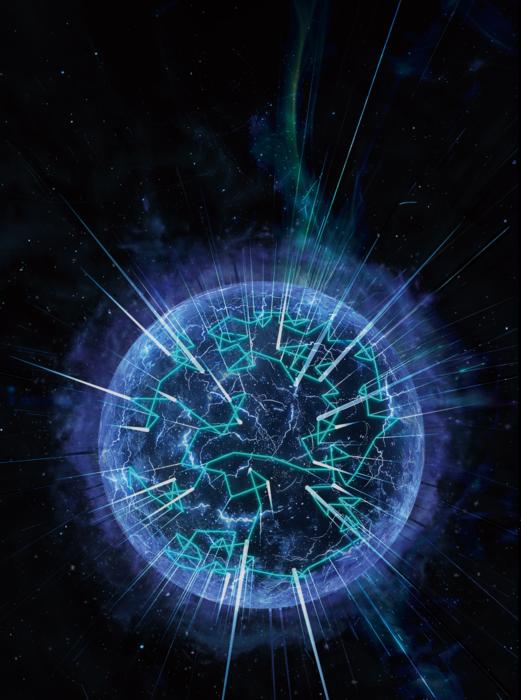Fast radio bursts (FRBs) represent the most intense radio explosions in the Universe, releasing sufficient energy, within just a thousandth of a second, to power the global human society for a trillion years. Since the first discovery in 2007, FRBs have garnered significant attention, culminating in the 2023 Shaw Prize in Astronomy. With yet unknown origin, these extreme cosmic bursts are among the most enigmatic phenomena in astronomy as well as physics.

Credit: ©Science China Press
Fast radio bursts (FRBs) represent the most intense radio explosions in the Universe, releasing sufficient energy, within just a thousandth of a second, to power the global human society for a trillion years. Since the first discovery in 2007, FRBs have garnered significant attention, culminating in the 2023 Shaw Prize in Astronomy. With yet unknown origin, these extreme cosmic bursts are among the most enigmatic phenomena in astronomy as well as physics.
Causality dictates that FRB sources should be smaller than c·dt in size, where c is the speed of light and dt is the duration of the events. For a typical 1 millisecond burst, this implies a region smaller than 300 kilometers, implying compact objects such as neutron stars or black holes to be the FRBs’ engines. Fast spin have been observed in most compact objects, give rise to the expectation of periodicity in repeating FRBs’ bursts. However, extensive searches for periodicity from millisecond to second scales have all failed, prompting a re-evaluation of FRB emission mechanisms.
A team led by Professor Di Li from the National Astronomical Observatories of the Chinese Academy of Sciences has introduced a novel approach to characterize the FRBs’ behavior in the time-energy bivariate phase space. Quantifying the randomness and chaos using generalized “Pincus Index” and “Lyapunov Exponent”, respectively, they manage to place FRBs in the context of other common physical events like pulsars, earthquakes, and solar flares, systematically.
Both randomness and chaos cause unpredictability, but they are distinct. The unpredictability of a random sequence stays constant over time, picturing rolling dice—the outcome of each roll bears no link to the previous one. In chaotic systems, unpredictability increases exponentially over time. For example, anyone can predict the weather in the coming seconds by looking up and around, while it is still challenging for mankind to predict weather for longer term accurately.
The team found FRBs to roam around the energy-time phase space, with lower level of chaos but higher degree of randomness than those of earthquakes and solar flares. The pronounced randomness of FRB emissions suggests a combination of multiple emission mechanisms or locations. This study establishes a new frame of quantifying FRBs and gets us closer to finally revealing the origin of these violent cosmic explosions: who is rolling the cosmic dice?
###
See the article:
Yong-Kun Zhang, Di Li, Yi Feng, Pei Wang, Chen-Hui Niu, Shi Dai, Ju-Mei Yao, Chao-Wei Tsai. The arrival time and energy of FRBs traverse the time-energy bivariate space like a Brownian motion. Science Bulletin 2024;69(8):1020-1026
Journal
Science Bulletin



